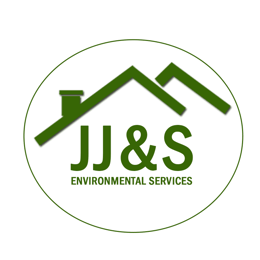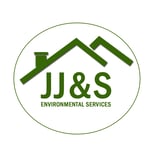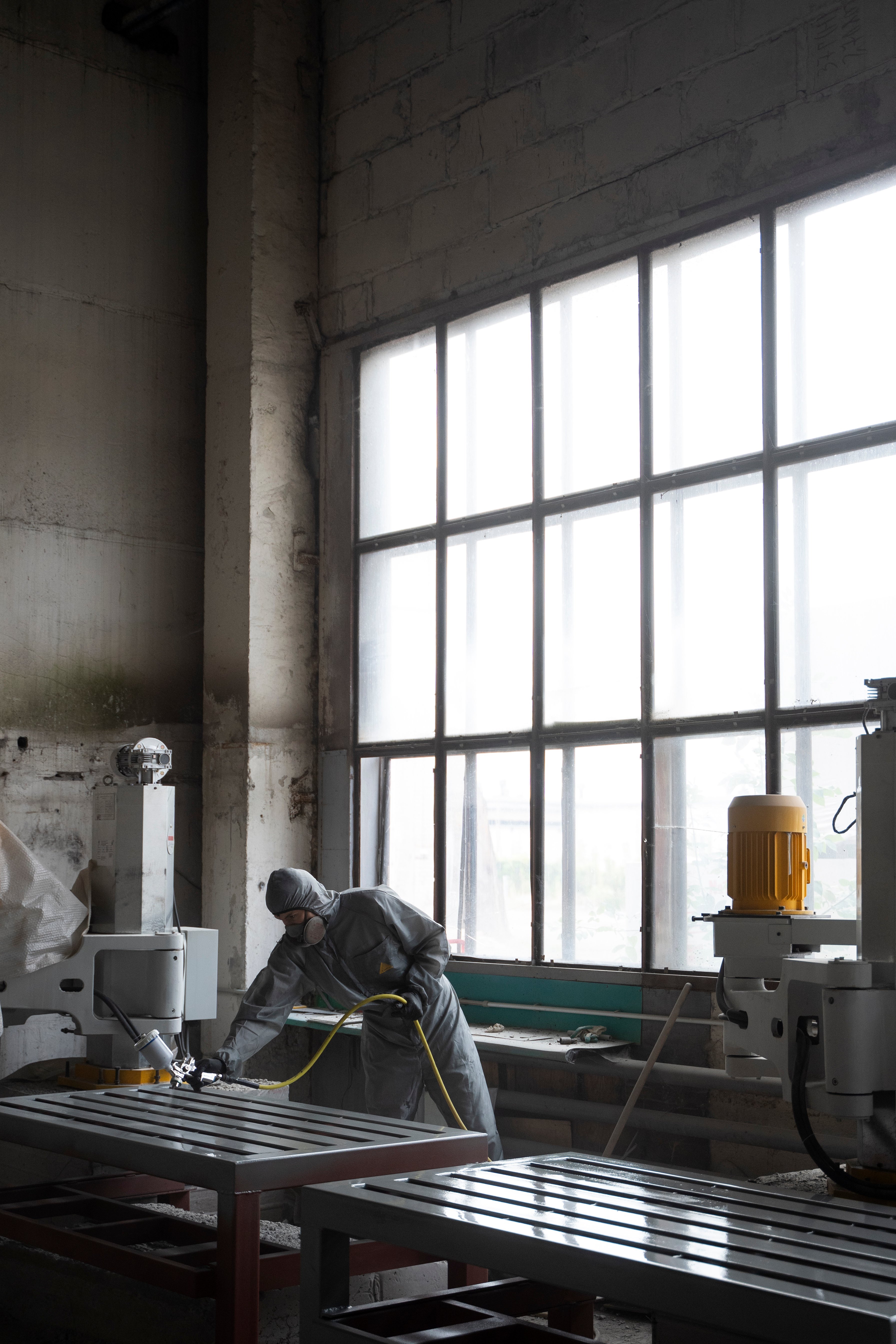4 steps to create a solid Industrial Hygiene program:
- Identify Hazards: Begin by thoroughly identifying potential hazards in the workplace, whether they are physical, chemical, or biological, to understand the scope of risks present.
- Assess Risks: Evaluate the severity and likelihood of each hazard’s impact on employee health, which helps prioritize necessary safety actions.
- Develop Control Measures: Implement targeted control measures—such as improving ventilation, introducing protective equipment, or adjusting processes—to minimize exposure.
- Monitor Effectiveness: Regularly review feedback and update protocols to ensure the program remains responsive to new risks and regulatory requirements.
Each step builds upon the last, creating a comprehensive approach to workplace safety.

Industrial Hygiene Program: building a safer workplace for B2B Companies
What is an Industrial Hygiene Program, and why is it critical for businesses? For companies in high-risk sectors, an industrial hygiene program provides a structured approach to identifying, assessing, and controlling workplace hazards, ensuring employee safety and regulatory compliance. In this post, we’ll explore the core elements, benefits, and practical applications of an industrial hygiene program, focusing on how companies like JJ&S help businesses achieve safer workplaces through asbestos abatement and mold remediation.
.png?width=948&height=237&name=Beige%20Aesthetic%20Business%20Banner%20Email%20Header%20(600%20x%20150%20px).png)
What is an Industrial Hygiene Program?
An Industrial Hygiene Program establishes the standards and practices necessary to protect workers from physical, chemical, and biological hazards. In fields like construction, manufacturing, and environmental abatement, hazards are inevitable, from airborne particulates to loud noise. This program outlines clear protocols for managing such risks, demonstrating a company’s commitment to workplace safety and compliance with OSHA standards.
Why Does an Effective Industrial Hygiene Program Matter?
The benefits of a robust industrial hygiene program are manifold:
-
Visibility and Accountability: This program creates transparency around safety practices, aligning management and employees with shared safety goals.
-
Actionable Hazard Management: It provides actionable steps to mitigate chemical, biological, and physical hazards, which is essential for new hires and experienced staff alike.
-
Employee Support and Safety: A structured program ensures workers have the resources they need to perform their jobs safely, which positively impacts morale.
-
Protection from Legal and Financial Risks: Compliance with OSHA standards reduces the risk of fines and legal issues, safeguarding the company’s financial health.
What are the four main elements of an Industrial Hygiene Program?
1. Identifying Hazards
The first step in any industrial hygiene program is hazard identification. This process involves conducting thorough assessments of the workplace to detect physical, chemical, and biological risks. For example, an audit may reveal airborne asbestos fibers or mold spores in an older building, which pose severe health risks to employees.
Regular inspections and comprehensive audits are essential. These steps allow companies to understand potential hazards and gather data that informs the rest of their safety measures. Hazard identification is the foundation of an OSHA-compliant safety program.
2. Assessing Risks
Once hazards are identified, the next step is to assess the risks they pose. Risk assessments involve evaluating both the likelihood and severity of exposure to different hazards. This can include measuring noise levels, assessing chemical exposures, and determining the potential impacts on employee health.
For example, exposure to asbestos fibers in an industrial setting can have long-term health consequences, including respiratory diseases. Understanding the extent of these risks helps companies make informed decisions on protective measures and workplace modifications.
3. Developing Control Measures
After assessing risks, companies need to develop control measures tailored to mitigate identified hazards. Control measures range from physical changes, like enhanced ventilation, to administrative controls, such as enforcing the use of personal protective equipment (PPE).
Each control measure should be prioritized based on its impact on health and safety. For example, substituting hazardous materials with safer alternatives can provide a high level of protection. Collaborating with experts often helps companies find cost-effective solutions that meet safety requirements without compromising budget constraints.
4. Monitoring Program Effectiveness
The final step in an industrial hygiene program is monitoring its effectiveness. Continuous monitoring ensures that control measures remain effective and that the program adapts as needed. For instance, if employees find certain PPE uncomfortable or challenging to use, management may need to review and adjust requirements.
Regular monitoring and feedback loops allow companies to improve safety protocols over time, keeping them aligned with evolving industry standards and regulatory changes.

What are Some Examples of Industrial Hygiene Practices?
Industrial hygiene practices can vary depending on the specific risks present in a workplace. Here are a few common examples:
-
Noise Monitoring: Regular monitoring of noise levels in manufacturing or construction settings helps prevent hearing loss and maintains compliance with OSHA limits.
-
Air Quality Assessments: Regular air quality tests detect airborne contaminants, such as asbestos or silica dust, which are harmful if inhaled over long periods.
-
Ventilation Control: Adequate ventilation is crucial for spaces where hazardous materials are used, as it reduces airborne concentrations and lowers exposure risks.
What are the Primary Goals of an Industrial Hygiene Program?
The main goals of an industrial hygiene program are to safeguard employee health, maintain regulatory compliance, and protect a company’s reputation. By reducing exposure to hazardous substances, a company not only protects its employees but also enhances productivity and minimizes the likelihood of costly accidents or health-related absences.
Practical Tips for Implementing an Industrial Hygiene Program
- Hire a Professional Consultant: Many companies lack the expertise to manage all aspects of industrial hygiene. A professional consultant can provide invaluable guidance on hazard identification and risk assessment.
- Consistency in Implementation: Consistent enforcement of safety practices is essential. Any lapses can increase risks and reduce the program’s overall effectiveness.
- Document All Procedures: Documentation of assessments, control measures, and incidents is critical for compliance and continuous improvement.
- Involve Employees in Feedback: Employees directly engage with safety protocols, making their feedback valuable for refining the program.
Connecting Industrial Hygiene Practices to High-Risk Workplaces
In fields like asbestos abatement and mold remediation, the stakes for industrial hygiene are especially high. Asbestos, for example, has long-term health effects, including respiratory diseases and cancer, while mold exposure can cause allergic reactions and respiratory issues.
At JJ&S, we support California businesses in managing these risks through our asbestos and mold remediation services. We work closely with companies to provide OSHA-compliant solutions for high-risk workplaces. Our services are an integral part of many companies’ industrial hygiene programs, helping them maintain safer work environments.
How Does JJ&S environmental services contribute to Industrial Hygiene Programs?
JJ&S offers specialized support for businesses aiming to reduce hazardous exposures. Our asbestos abatement services, for instance, involve comprehensive assessments, containment, and removal procedures. These measures help businesses meet regulatory standards and protect workers from long-term health risks.
Similarly, our mold remediation services address airborne mold spores, ensuring that environments are safe and compliant. By partnering with JJ&S, businesses can enhance their industrial hygiene efforts and stay compliant with California’s rigorous health and safety regulations.



.png?width=948&height=237&name=Beige%20Aesthetic%20Business%20Banner%20Email%20Header%20(600%20x%20150%20px).png)





